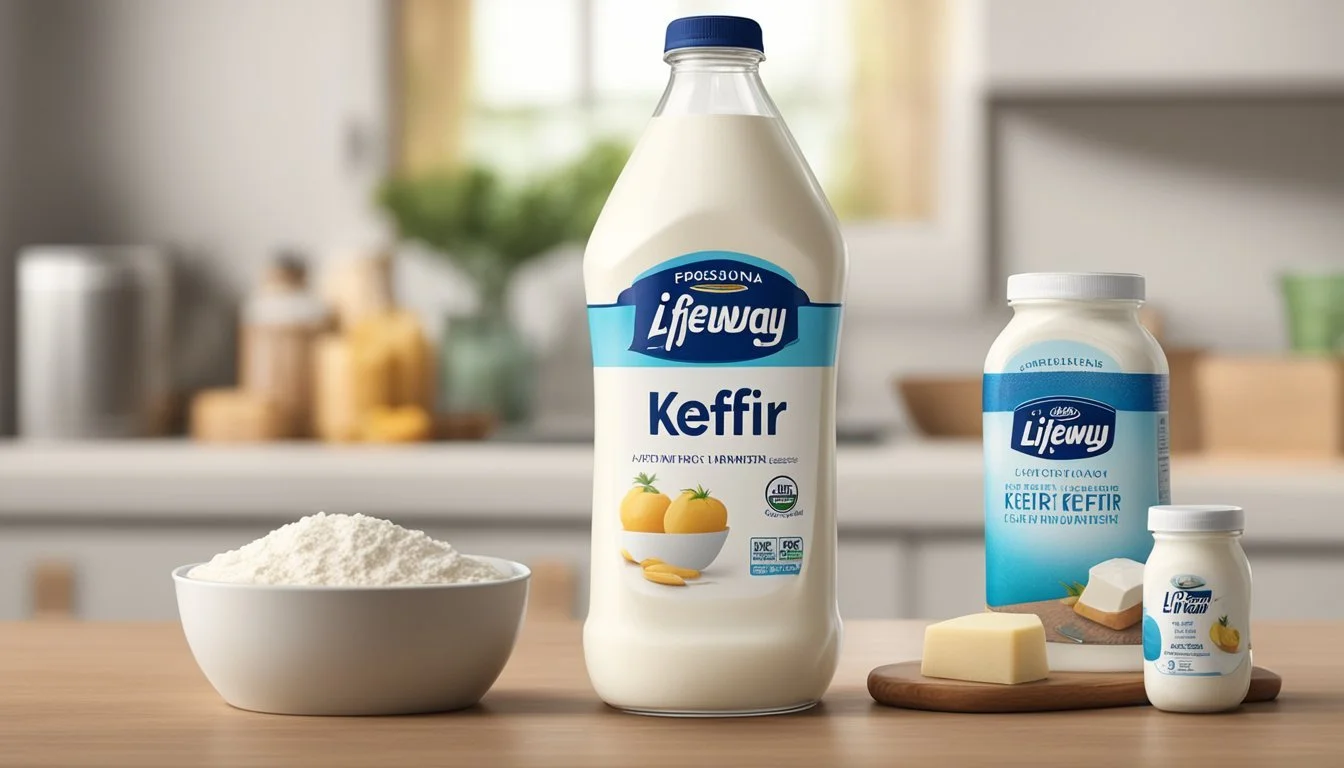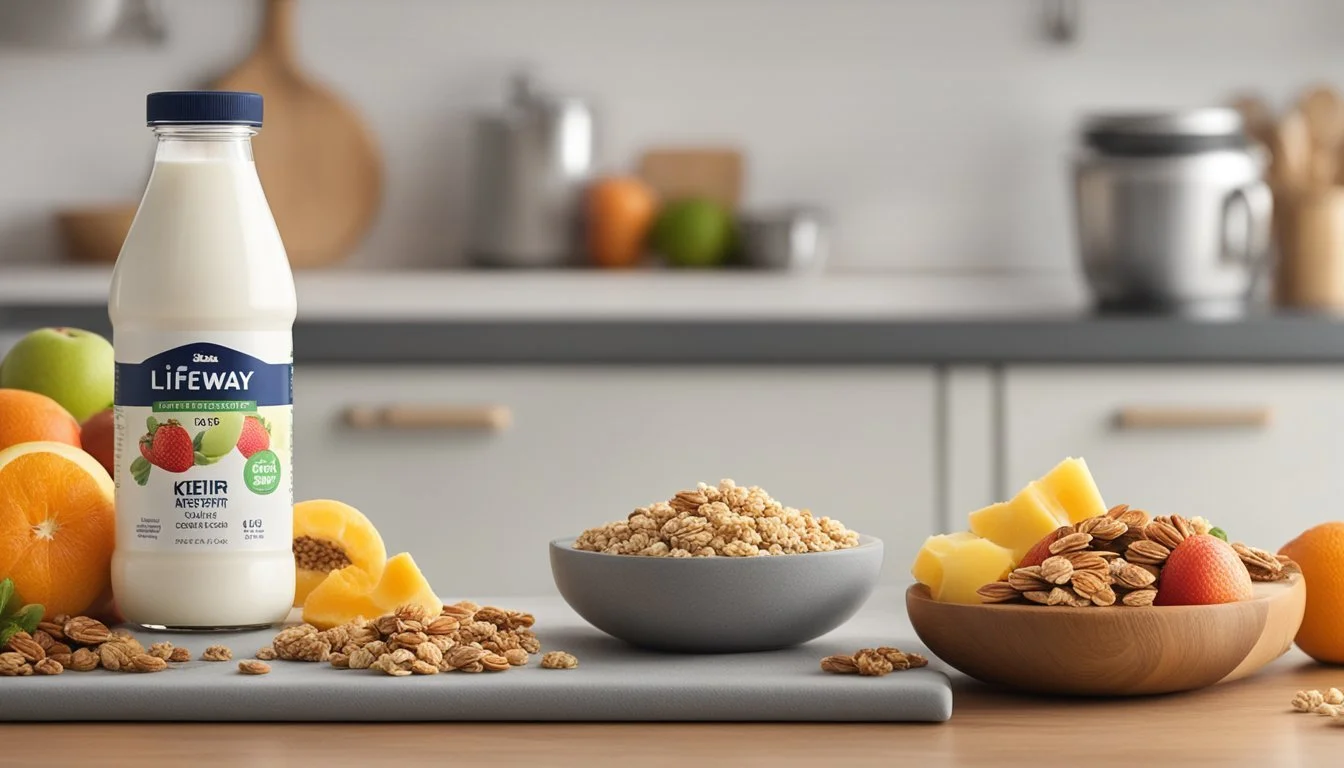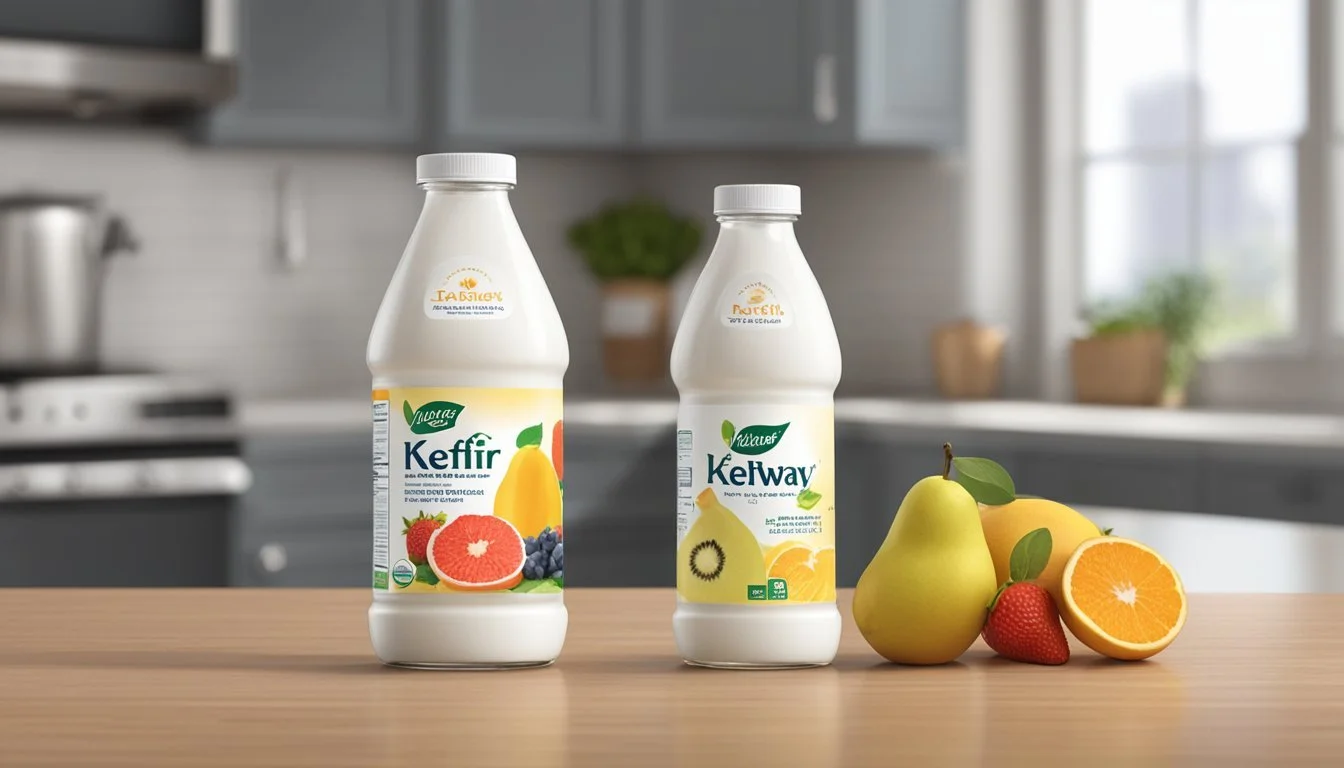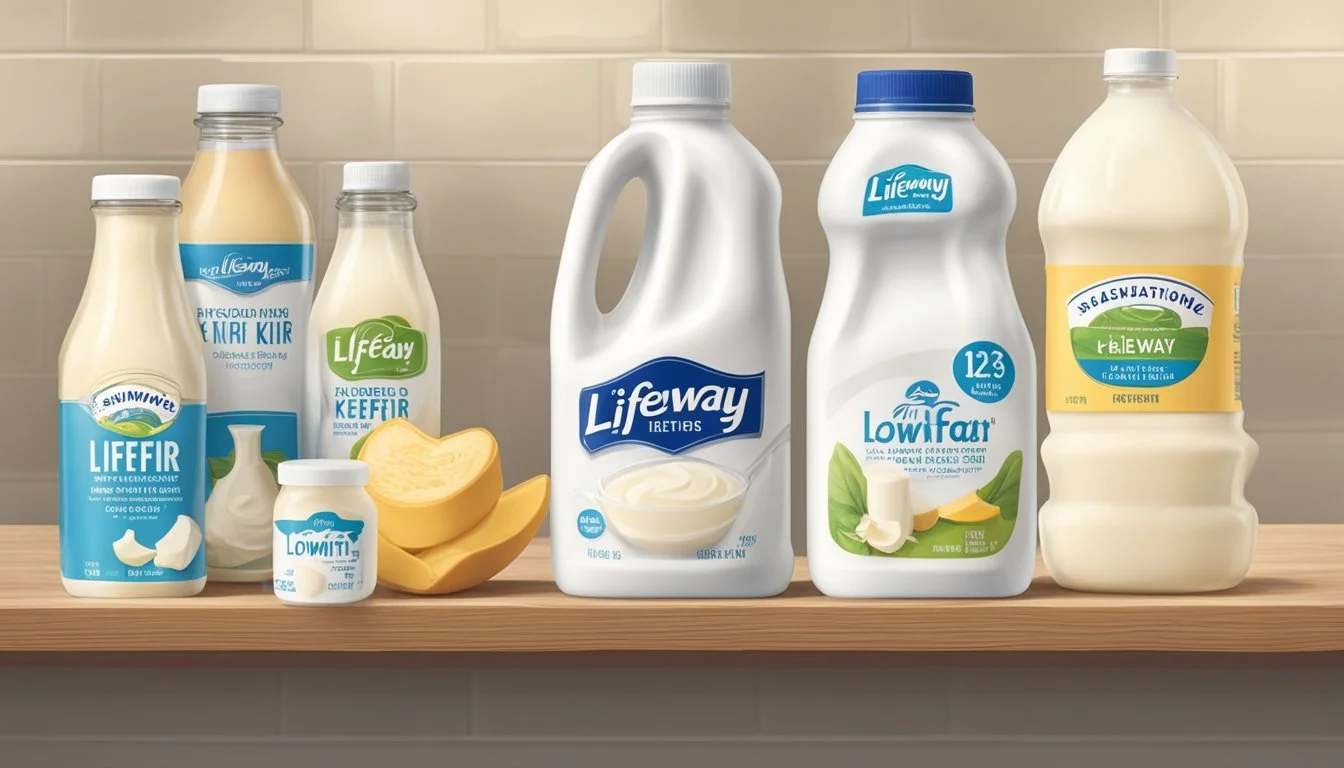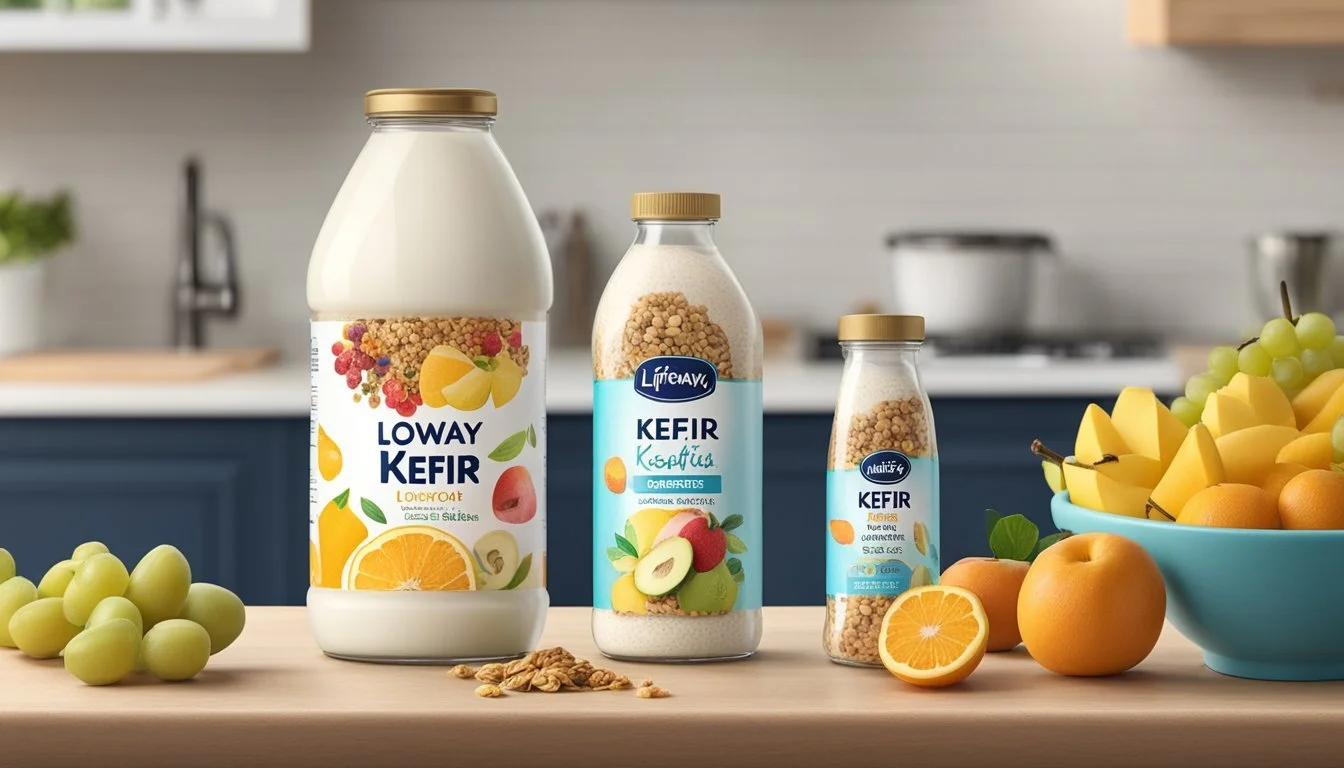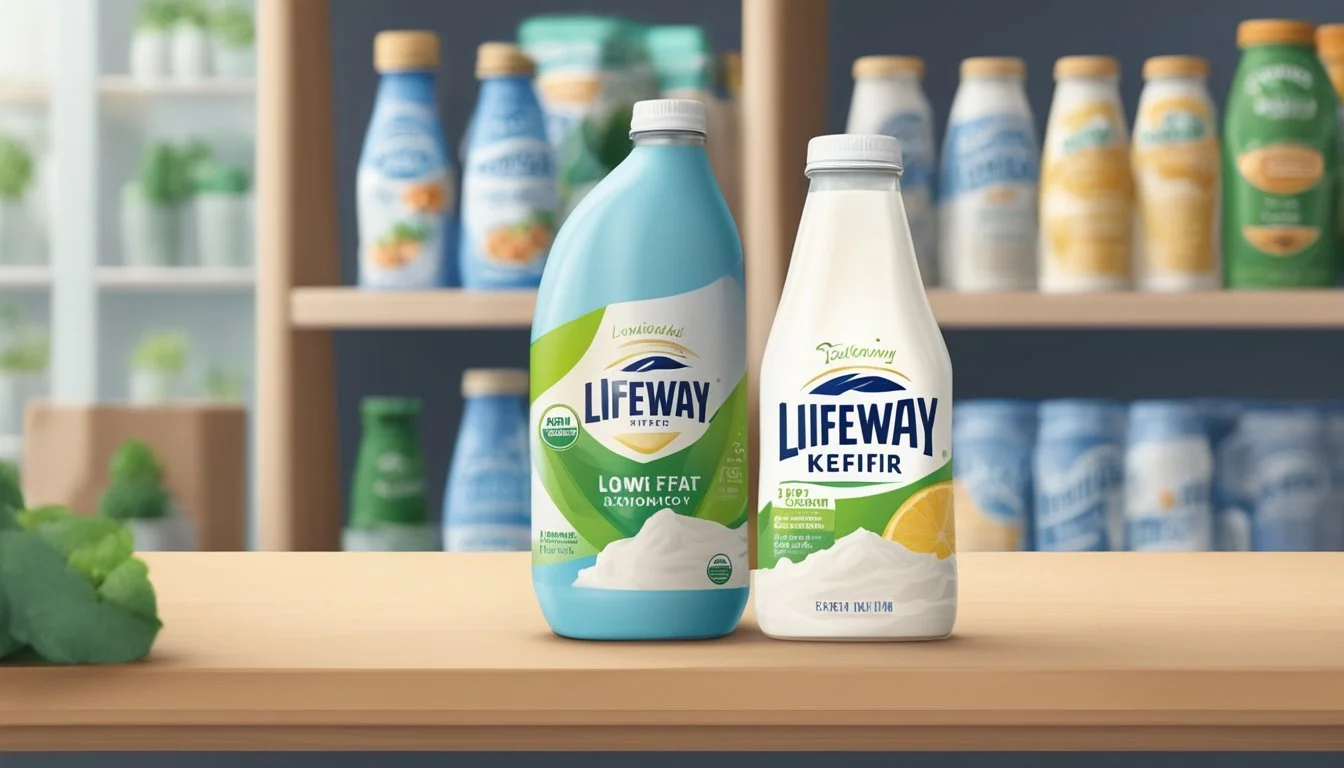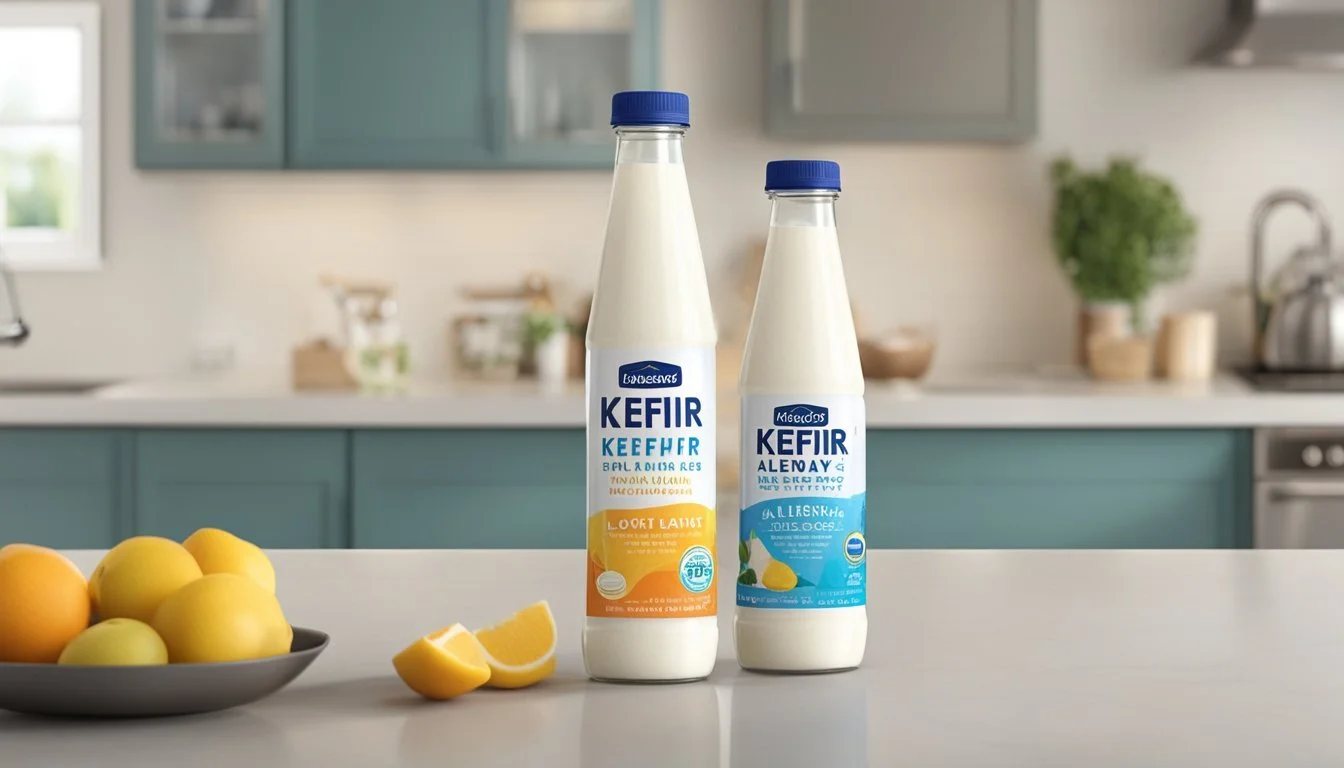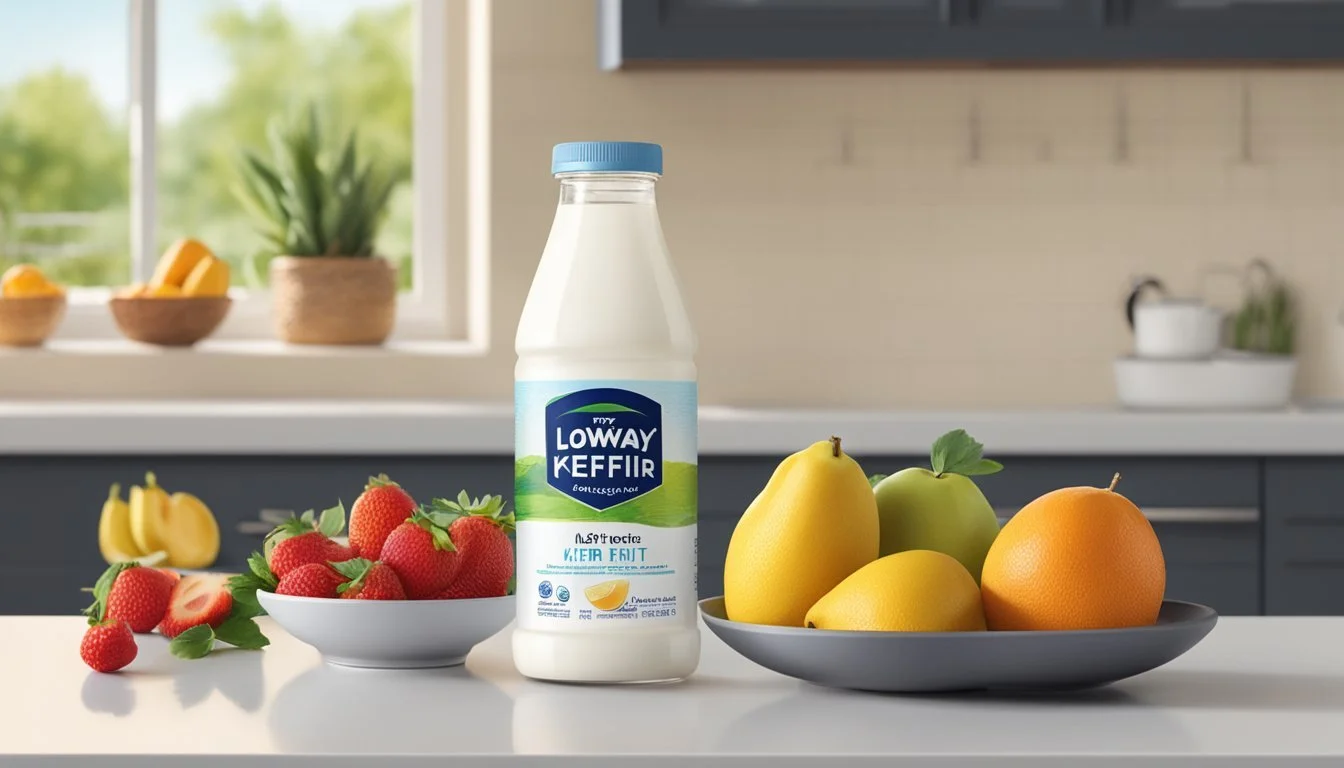How Long Does Lifeway Lowfat Kefir Last?
Shelf Life and Storage Tips
Lifeway Lowfat Kefir, a cultured dairy beverage renowned for its health benefits, boasts a rich blend of probiotics due to its unique fermentation process. With origins tracing back over 2000 years to the Caucasus Mountains, kefir is celebrated for its contributions to digestive health and overall well-being. It contains 10 to 12 live and active cultures and offers an impressive probiotic profile compared to other cultured dairy products.
The shelf life of Lifeway Lowfat Kefir is an important factor to consider for consumers who value both the nutritional benefits and freshness of their dairy products. Once purchased, the longevity of this tart and tangy drink depends greatly on proper storage conditions. Typically, kefir can last for a certain duration, and signs of spoilage, such as changes in taste, consistency, or smell, will indicate when it is no longer suitable for consumption.
Ensuring that kefir is stored at the right temperature is essential to maintain its quality. The storage methods directly impact not only the safety but also the potency of the probiotics contained within. Regular consumption of Lifeway Lowfat Kefir can contribute to one's health regimen by providing a source of protein, calcium, and vitamin B12 in a gluten-free and up to 99% lactose-free formula.
What Is Lifeway Lowfat Kefir?
Lifeway Lowfat Kefir is a cultured dairy beverage known for its creamy consistency and tart, tangy taste. It's a probiotic-rich drink made by fermenting milk with a symbiotic culture of bacteria and yeasts. The product boasts a history that spans over 2000 years, originating in the Caucasus Mountains, and today is celebrated for its health benefits.
Key Characteristics:
Probiotic Content: Contains live and active cultures which contribute to gut health.
Consistency: Lifeway Kefir has a creamy texture, similar to a drinkable yogurt.
Taste: It is tart and tangy, differing from the mild taste of conventional yogurt.
Nutritional Highlights:
Lactose-Free: Up to 99% lactose-free, making it suitable for people with lactose intolerance.
Gluten-Free: Safe for individuals with gluten sensitivities.
Lowfat: A healthier option with reduced fat content.
Protein-Rich: A good source of protein, supporting muscle maintenance and repair.
No Added Sugar: In certain products like the Plain Lowfat Kefir.
Quality and Ingredients:
Natural Ingredients: Made with all-natural, non-GMO ingredients.
Organic Options: Organic variants are available in Lifeway's product range.
Lifeway Kefir transcends its role as a mere beverage, often incorporated into smoothies, dips, and even enjoyed on its own. It differentiates itself from yogurt by the variety of probiotic strains it contains, offering a unique composition of beneficial bacteria for the consumer.
Nutritional Profile
Lifeway Lowfat Kefir offers a rich array of essential nutrients beneficial for a balanced diet. This fermented dairy drink not only provides probiotics but also contains vital proteins, vitamins, and minerals.
Macro and Micro-Nutrients
Lifeway Lowfat Kefir is an excellent source of protein and calcium, two crucial macro-nutrients for maintaining bone health and muscle function. Each serving contains a significant amount of protein, which supports tissue repair and growth, and high levels of calcium for strong bones and teeth. On the micro-nutrient side, Keefer is generally modest in iron and potassium content, contributing to better circulation and cardiovascular health.
Vitamins and Dietary Importance
A single serving of Lifeway Lowfat Kefir is infused with vitamin A palmitate and vitamin D3, fortifying it with properties that support the immune system and enhance bone strength. Vitamin D is especially critical for absorbing calcium and maintaining phosphorus levels in the blood. Additionally, kefir is characterized by low sugar content when unsweetened, making it a favorable option for those monitoring their sugar intake. The presence of these vitamins highlights kefir's role in a nutritious diet, contributing to overall wellness and disease prevention.
Storage Guidelines
The shelf life of Lifeway Lowfat Kefir is closely linked to its storage conditions. Ensuring that the product is stored correctly can significantly impact its freshness and safety for consumption.
Ideal Storage Conditions
Lifeway Lowfat Kefir should be stored in a cool, dry place away from direct sunlight. The ideal condition for unopened bottles of kefir is in a dark pantry or cupboard at a stable temperature. Once opened, it must be kept in the refrigerator to maintain its quality.
Refrigeration and Temperature Control
For Lifeway Lowfat Kefir, refrigeration is essential. The product must be kept in the refrigerator at all times, and the temperature should be consistently maintained at 40°F (4°C) or below. The pasteurized nature of the kefir requires this level of temperature control to prevent spoilage. In the refrigerator, Lifeway Lowfat Kefir typically has a shelf life of about two weeks, though it's advised to check the product’s expiration date as a more specific guideline.
Shelf Life and Spoilage
When considering Lifeway lowfat kefir, one should understand both how long it remains fresh and how to identify when spoilage has occurred.
Typical Shelf Life Expectancy
Lifeway lowfat kefir typically has a shelf life that spans from the production date to the printed expiration date on the package. Under ideal refrigeration, it remains fresh for 1-3 weeks post-opening, potentially extending a few days past the labeled date. Each batch, however, may present slight variance, although adherence to storage guidelines maintains optimal freshness.
Identifying Spoilage Signs
Determining if Lifeway lowfat kefir has spoiled involves looking for noticeable changes in:
Smell: A sour smell that is more pungent than the natural tangy scent of kefir can indicate spoilage.
Taste: If the tangy flavor has intensified to an unpleasant sour taste, it may be a sign the product has gone bad.
Visuals: The presence of mold or any unusual changes in the color or texture signals spoilage.
It's important to track these spoilage signs for each batch, as they can help consumers avoid consuming spoiled kefir.
Using Kefir in Recipes
Lifeway lowfat kefir can elevate various dishes with its tangy flavor and creamy consistency, expanding beyond just a health drink. It not only enhances the taste profile but also adds nutritional depth to standard recipes.
Culinary Applications
Kefir serves as a versatile ingredient in the kitchen. It can replace less nutritious liquids in recipes, whether it’s to thicken smoothies or add a probiotic punch to salad dressings. Here’s how kefir can be used in different culinary contexts:
Smoothies: Substitute milk or yogurt with kefir for a nutrient-rich and creamy texture.
Salad Dressings: Use plain kefir to create ranch or other creamy dressings that require a tangy, rich base.
Dips: Blend kefir with ingredients like nutritional yeast, cashews, and hot sauce to make a delicious buffalo queso dip.
Creative Cooking Ideas
Chefs and home cooks alike can get creative with kefir in their cooking. It serves as a health-forward substitute without compromising on taste or texture. Here are a few ideas where kefir can play a starring role:
Marinades: Kefir’s acidity makes it an excellent choice for tenderizing meats.
Baking: Incorporate kefir into batters for pancakes or muffins for added moistness.
Sauces: Thicken and enrich sauces with kefir instead of cream, lending a tangy undertone to dishes.
By experimenting with kefir in these applications, one can introduce a novel twist to familiar recipes while boosting the dish’s nutritional profile.
Understanding Fermentation
Fermentation is a crucial process in creating Lifeway lowfat kefir, transforming it into a nutrient-rich beverage teeming with probiotics.
The Fermentation Process
During fermentation, specific strains of bacteria and yeast work to convert lactose, the sugar found in milk, into lactic acid. This transformation not only yields the tart and tangy flavor characteristic of kefir but also contributes to the creamy consistency that it is famed for, often referred to as the "champagne of dairy" due to its subtle effervescence. The kefir culture comprises various beneficial microbes, including Lactobacillus lactis, Streptococcus diacetylactis, Lactobacillus plantarum, and Lactobacillus casei. These probiotics are integral to the fermentation process, and their activity results in the increases of certain vitamins and bioavailable minerals, rendering the fermented beverage nutritionally dense.
Impact of Fermentation on Health
The fermentation process not only affects the flavor and texture of kefir but also has a transformative impact on its health benefits. Probiotics, the live microorganisms produced during fermentation, are known to aid in digestion and enhance overall gut health. They populate the gut microbiome and contribute to a healthy digestive ecosystem, which can be beneficial for immune function and nutrient absorption. The specific strains found in Lifeway lowfat kefir, including Lactobacillus casei and Lactobacillus plantarum, have been studied for their potential in supporting the body's natural defenses and maintaining a balanced gut flora.
The Role of Probiotics
Probiotics, specifically the live and active cultures found in fermented dairy products like Lifeway Lowfat Kefir, play a significant role in the maintenance of gut health and the support of the immune system.
Digestive Health
The digestive system benefits greatly from probiotics because these live microorganisms, such as Lactobacillus rhamnosus, which is commonly found in kefir, help balance the gut microbiome. By ingesting these beneficial bacteria regularly:
They promote better nutrient absorption by breaking down and digesting food more efficiently.
They can alleviate common digestive issues like bloating and constipation.
Immunity and Overall Wellbeing
Probiotics contribute to the immunity of an individual by interacting with the microbiome and the immune cells. Their presence:
Helps in the production of natural antibodies and may boost immune cells like the IgA-producing cells.
Aids in warding off harmful pathogens, thanks to the competitive exclusion of detrimental microorganisms.
In the context of Lifeway Lowfat Kefir, the probiotic cultures and prebiotics found within provide a symbiotic benefit by supporting both the digestive system and immunity, which together impact the overall health and wellbeing of the consumer.
Caring for Kefir Products
Proper handling and storage are paramount to maintain the quality and extend the shelf life of Lifeway Lowfat Kefir. Ensuring that the product remains within its optimal condition requires attention to preparation and storage techniques.
Handling and Preparation
Lifeway Lowfat Kefir should be kept refrigerated and consumed by the date on the label. Upon opening, it is important to seal it tightly after each use to preserve its balance and consistency. The serving size for an individual may vary, but typically, one cup (8 ounces) is suggested. It's imperative to use clean utensils to prevent contamination and to maintain the product's quality.
Extending Shelf Life
To maximize the shelf life of opened Kefir, keeping it at a consistent, cold temperature is key. The refrigerator should be set at or below 40°F (4°C). Avoid storing Kefir in the door shelf where the temperature fluctuates. Freezing Kefir is not recommended, as it can alter the product's texture and fizz. If the Kefir has been stored properly, it may last up to two weeks after opening, though one should always perform a quality check before consuming. Seasonal temperature changes should be taken into account as refrigerators may require adjustment to maintain a constant temperature.
Differences in Kefir Varieties
When exploring the shelf life of Lifeway lowfat kefir, it's essential to understand the different types of kefir available. Each variety offers unique characteristics that could influence its longevity and storage requirements.
Flavored vs. Plain Kefir
Lifeway Kefir offers a range of flavors, infusing their kefir with natural flavors such as coconut, chocolate, and pomegranate. Flavored kefir might include components that alter both its taste and, potentially, its shelf life in comparison to plain kefir. In contrast, plain lowfat kefir is without added flavors or sugars, which may result in a more tart profile and homogeneous texture, free from fruit or flavor-derived lumps.
Lowfat vs. Full-Fat Options
Lifeway provides both lowfat and full-fat kefir options. The former typically contains about 1% milk fat and is enjoyed for its balance of creamy texture and reduced fat content. It comes in both flavored and plain varieties, catering to different palates while maintaining a nutritious profile. Meanwhile, full-fat kefir will have a richer consistency and may react differently to fermentation processes, which could influence its shelf life compared to lowfat versions. Both options, however, are products of fermented milk and can be up to 99% lactose-free.
Safety and Allergy Considerations
When considering the safety of Lifeway lowfat kefir, one must take into account its dairy content and the differences between homemade and store-bought versions. These considerations are crucial for individuals with specific dietary restrictions or allergies.
Potential Allergens
Lifeway lowfat kefir is primarily made from nonfat milk, which contains dairy. Individuals with lactose intolerance or milk allergies should exercise caution, as kefir, while up to 99% lactose-free, still contains dairy byproducts. The kefir also goes through a fermentation process and contains live cultures, which can vary from batch to batch. For people with sensitivities or allergies, these variations are important to note.
Allergens typically found in Lifeway lowfat kefir:
Dairy (nonfat milk)
Live cultures (can vary between batches)
It should also be mentioned that Lifeway lowfat kefir is non-GMO, appealing to consumers who prefer non-genetically modified products. Always check the label for the most accurate list of ingredients and potential allergens.
Homemade vs. Store-Bought Kefir
The shelf life and safety of kefir can differ significantly between homemade and store-bought products. Store-bought kefir like Lifeway is manufactured under more controlled conditions and typically includes an expiration date that indicates optimum freshness and safety. Homemade kefir’s shelf life can vary and it may last longer, but without the benefit of preservatives, it's crucial to be vigilant for spoilage signs:
Unusual smell
Off-color
Thickened texture beyond the normal creamy consistency
Homemade kefir must be prepared with meticulous attention to hygiene and storage to prevent contamination and spoilage. Consumers should ensure the containers and tools used are properly sterilized and follow reliable recipes. Store-bought varieties offer more predictability due to the standardization of their fermentation processes.
Miscellaneous Facts
In discussing the longevity of Lifeway Lowfat Kefir, it is pertinent to consider its cultural origins and environmental factors.
Kefir in Different Cultures
Kefir has been consumed for centuries, especially in Eastern European and Southwest Asian regions, where it is esteemed for its probiotic content. These probiotics include Bifidobacterium longum, Bifidobacterium breve, Lactobacillus acidophilus, among others. Traditional kefir may vary in fermentation time and bacterial content, which can influence shelf life and flavor. For example, Leuconostoc cremoris contributes to the sour taste of kefir, a characteristic feature in different cultures' versions of the drink.
Environmental Concerns
Environmental factors play a crucial role in the preservation of kefir. In optimal conditions, Lifeway Lowfat Kefir has an array of microorganisms such as Lactobacillus casei and Saccharomyces florentinus that prevent microbial contamination. However, if kefir is exposed to high temperatures or direct sunlight, this delicate balance may be disrupted, leading to spoilage.
In terms of packaging, a plastic container is often used to hold kefir; this material can protect the contents from external contaminants but may be permeable to air and odors, potentially affecting the product's shelf life. Moreover, elements such as pectin are added to prevent separation, maintaining a consistent texture despite varying environmental factors.
Nutritional Components Impact on Kefir Calorie Content Aids in assessing daily values and nutritional information. Protein Contributes to nutritional value, affecting perception of product freshness.
One must be aware that kefir's characteristic sour taste does not necessarily indicate spoilage, as it naturally possesses a tart flavor.
In summary, when considering the longevity of Lifeway Lowfat Kefir, both cultural practices and environmental conditions are essential factors. Understanding these elements educates consumers on proper storage methods and the expected shelf life of the product.

